See here for a new Monmouth poll of Virginia, which is clearly too close for comfort, and below for some key takeaways. For all the 2021 Virginia poll results, see here. Also, compare to the recent polls by the Wason Center and Roanoke College.
- “Democrat Terry McAuliffe has a lead in his bid to return to the Virginia governor’s mansion after a four-year absence…A number of voters say that both the current and prior occupants of the White House will have an impact on their vote for governor, although most of them have already decided on a candidate. The poll also finds tight margins in other statewide contests.”
- “Just under half (47%) of registered voters currently support McAuliffe while 42% back Youngkin. Both candidates claim formidable leads among voters who identify with their respective parties, but Youngkin holds an edge (44% to 38%) among independents. More Virginia voters describe themselves as Democrats than Republicans, which accounts for McAuliffe’s lead.”
- “McAuliffe has a significant advantage among voters of color – 80% to 8% among Black voters and 58% to 28% among Latinos, Asians, and multiracial voters. Youngkin holds a large 56% to 35% lead among white voters, but there is a split based on education. His lead with this group is largely due to white voters without a bachelor’s degree (65% to 25%). White college graduates narrowly prefer McAuliffe (49% to 42% for Youngkin).”
- “Looking at regional results, McAuliffe enjoys a large advantage in Northern Virginia (56% to 27%) as well as leads in the eastern Tidewater (50% to 37%) and central Richmond/I-95 (53% to 43%) regions. Youngkin claims a large lead in the western half of the commonwealth (61% to 31% for the Democrat).”
- “A range of potential electorate scenarios* show McAuliffe with a lead ranging from 2 points to 7 points depending on the model. Youngkin does better when more low-propensity voters are included in the mix. Specifically, McAuliffe has a fairly comfortable lead among voters who have cast ballots in every general election since 2016 (52% to 41%) while those who voted in only 2 or 3 elections during that time are evenly split (42% for Youngkin and 41% for McAuliffe). When the potential electorate is limited only to voters who cast ballots in the 2017 gubernatorial election, the Democrat holds a 50% to 44% margin.”
- “The Democratic Party has a small aggregate advantage over the GOP in the race for House of Delegates (48% to 45%).”
- “Republicans are a little more excited than Democrats this year. The question is whether this enthusiasm turns out enough low-propensity Youngkin supporters to close the gap”
- “When asked whom they trust more to handle these top concerns, voters give McAuliffe an advantage on the pandemic (38% to 26% for Youngkin) and race issues (35% to 26%), and a narrower edge on education and schools (36% to 31%). The electorate is more divided on trusting either Youngkin (35%) or McAuliffe (33%) more when it comes to jobs and the economy.”
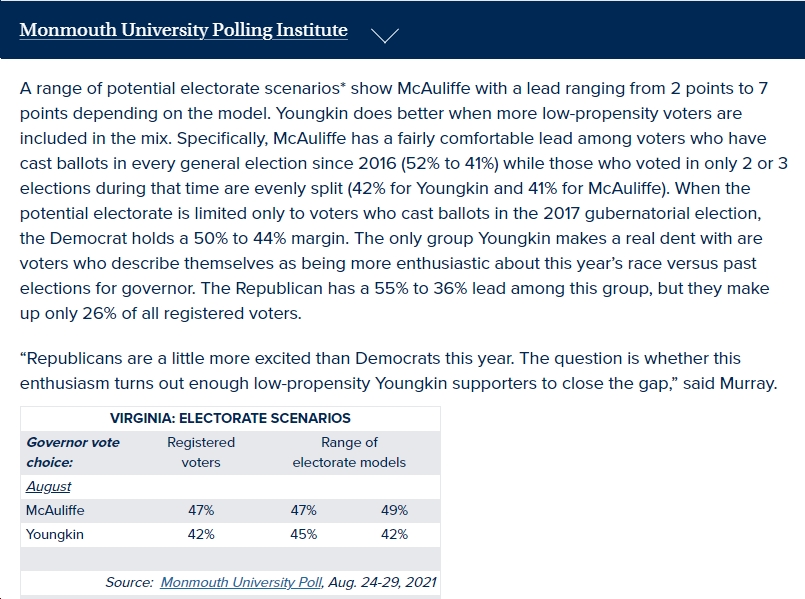
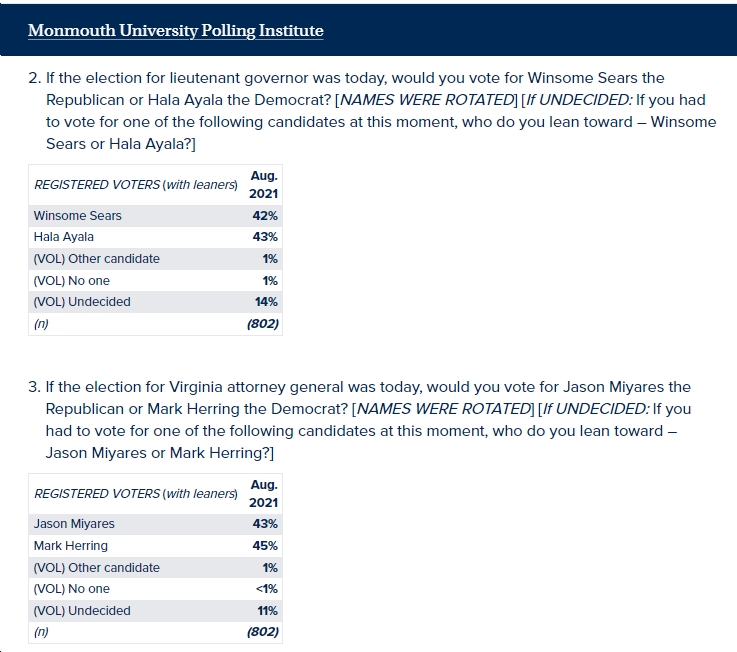
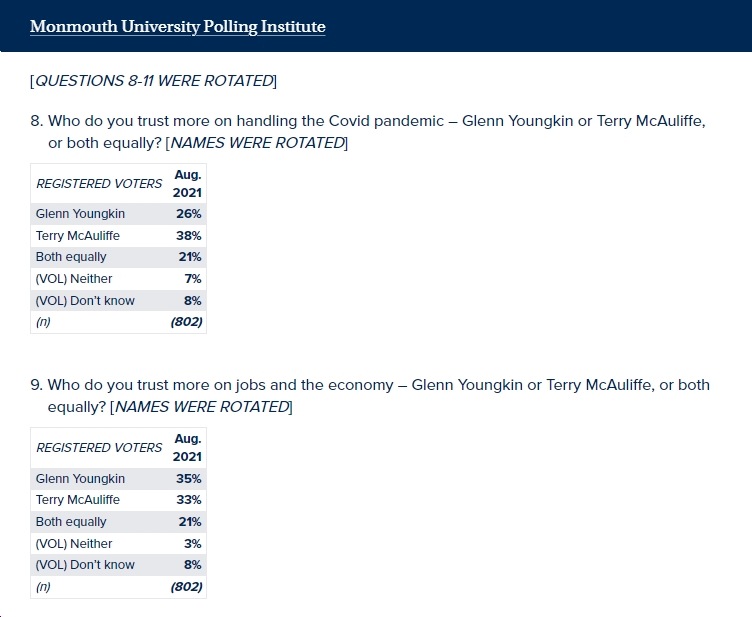
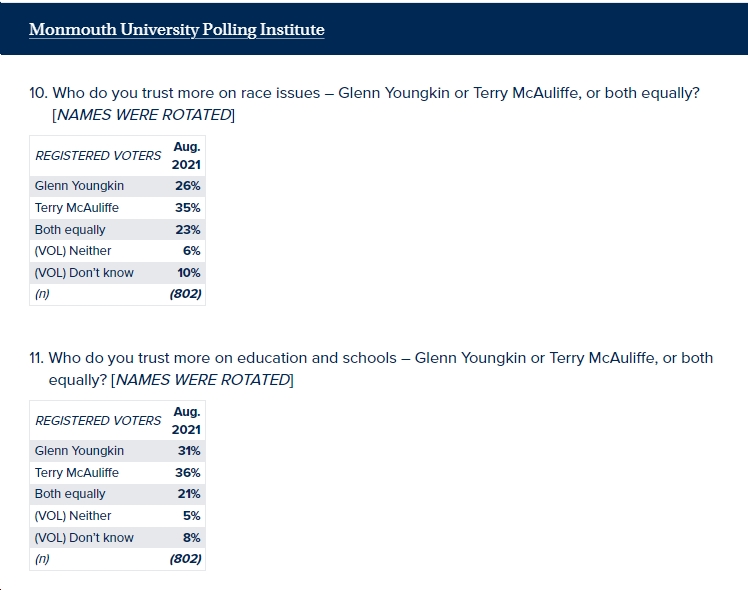
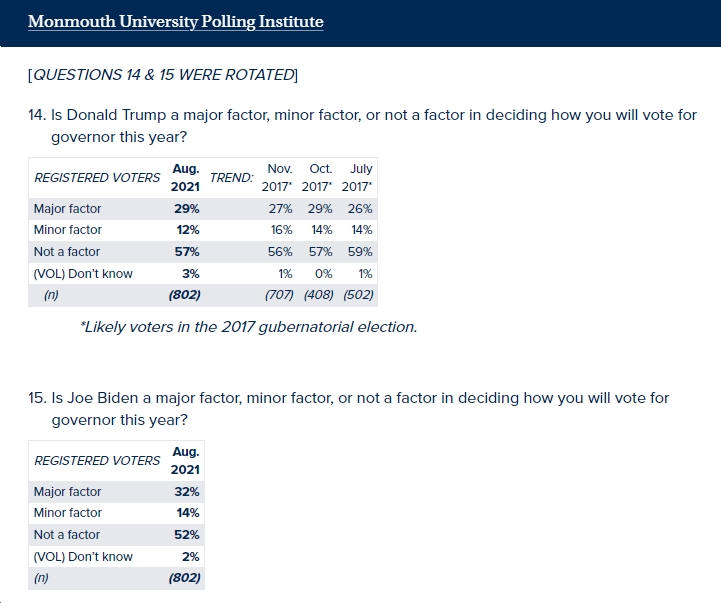




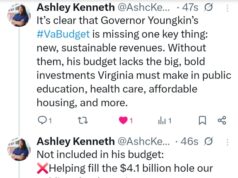










![Video: Sen. Mark Warner Says Last Night, “you saw an angry old man [Trump] giving a partisan screech that doesn’t solve anything”](https://bluevirginia.us/wp-content/uploads/2025/12/warner1218-100x75.jpg)